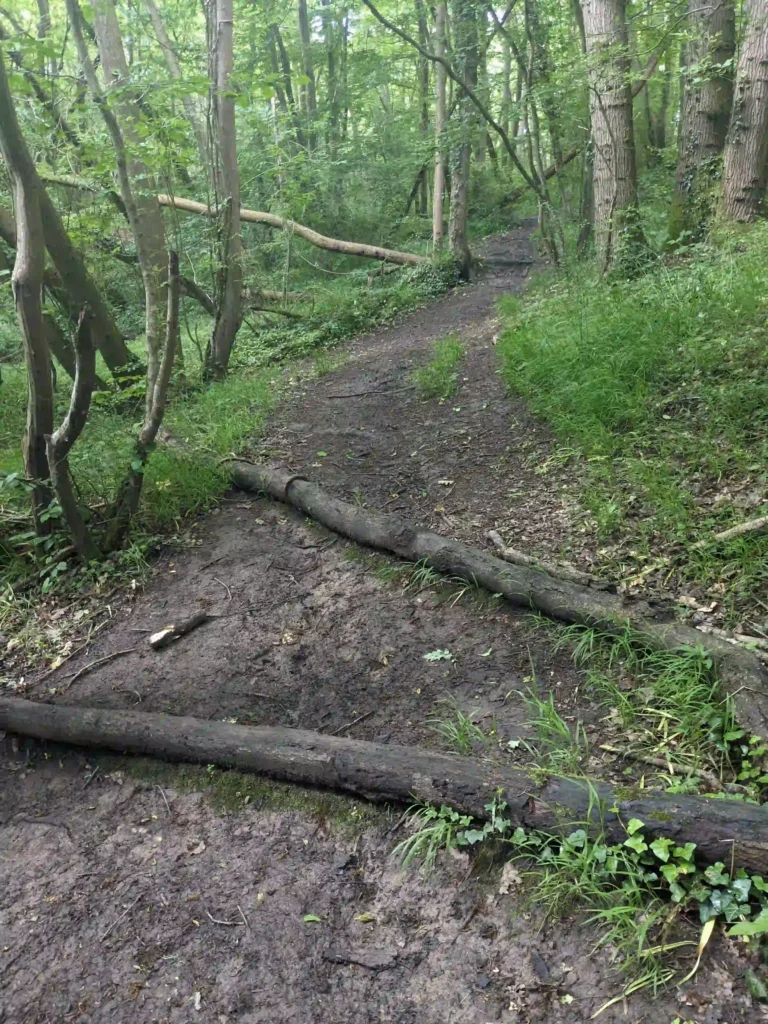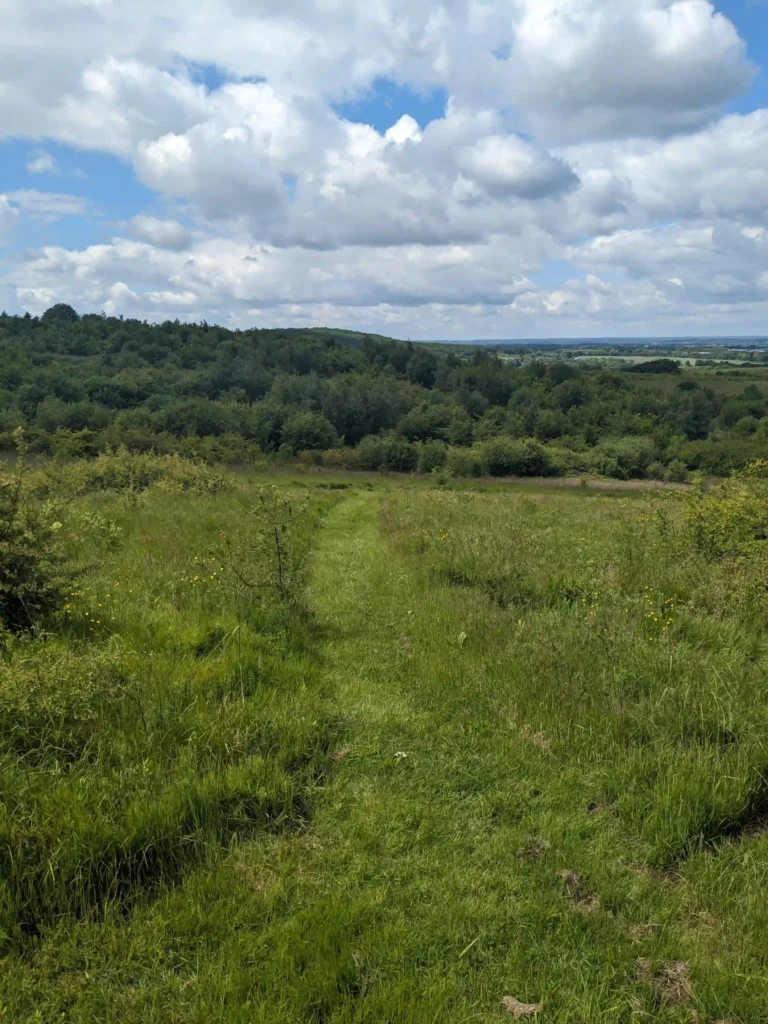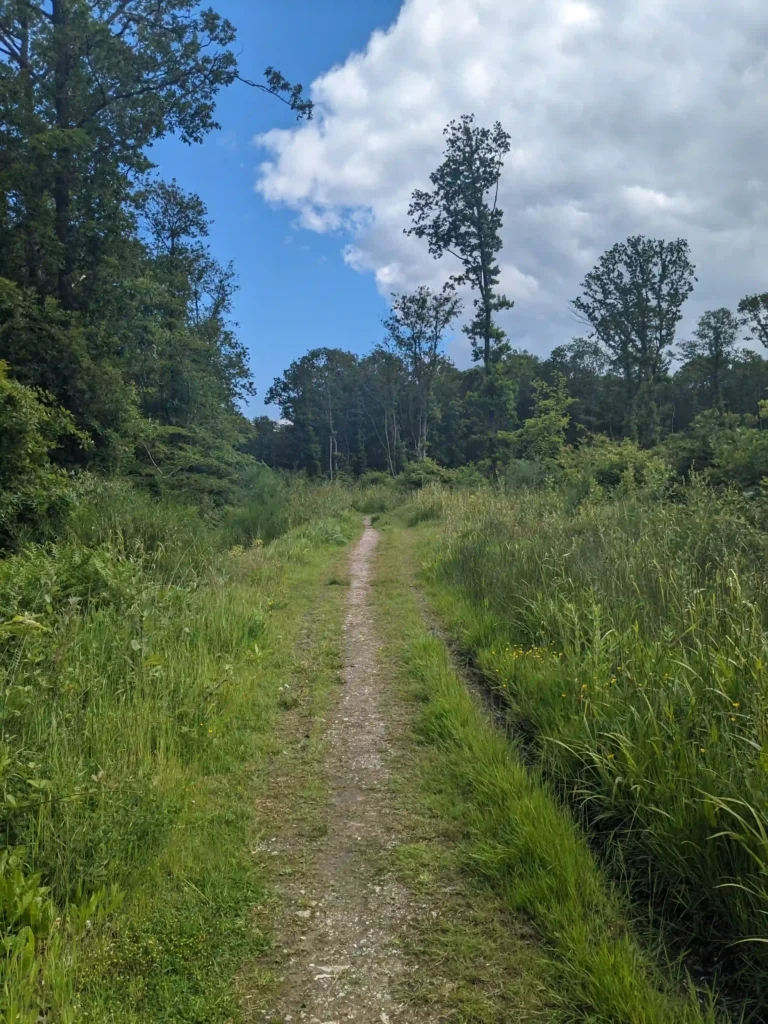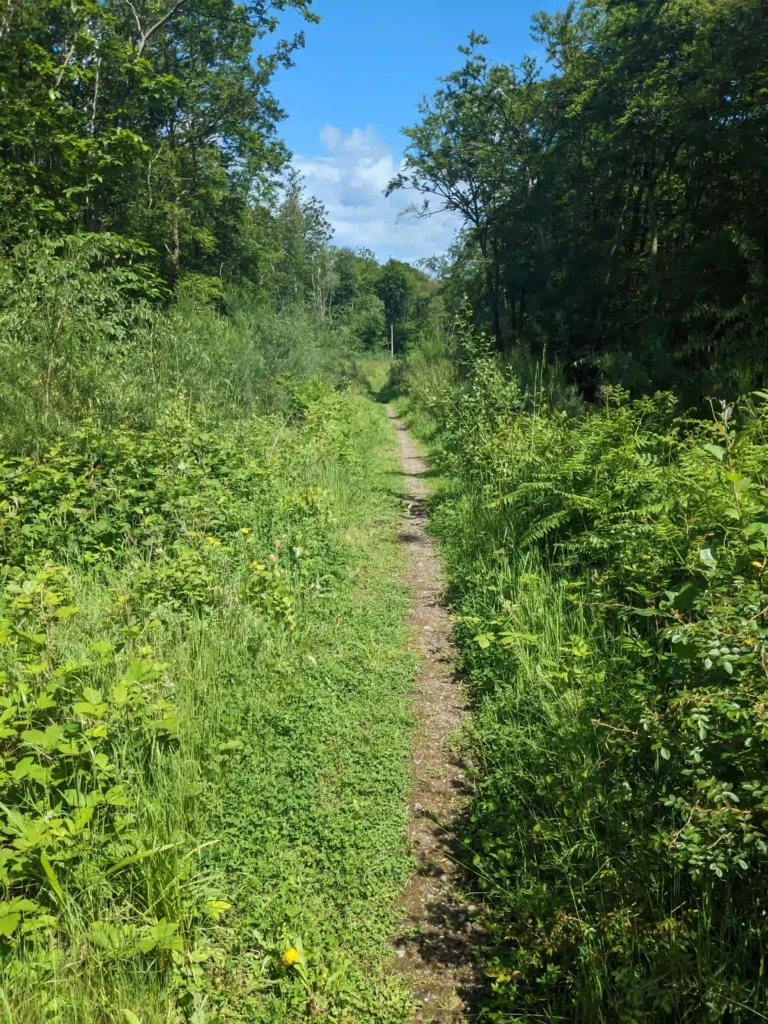9 Great Benefits Of Trail Running
Now that summer is here, for those of us in the northern hemisphere at least, it is a great idea to get outside more, and one of the best ways to do this is to perform cardio sessions outside. There are many health benefits to performing cardio outside, such as getting more sunlight, getting fresh air, especially if we can get into the countryside, and getting away from boring cardio sessions in a gym environment.
One of the best ways to do this is running; one of our favorite types of running is trail running. Trail running gives us the ultimate freedom to get outside in nature, explore different routes, and get a great cardiovascular workout. The more natural trail running environment compared to road running is also great for our mental health and offers unique challenges.
Whether you are just getting into running, or you are a recreational runner looking for something a little different, trail running can be a great option. This article is also relevant for those individuals looking to build muscle and strength, whose main focus is not running, and who are looking for an alternative to performing their cardio in the gym.
What Is Trail Running?
Trail running can be defined as any time you are running on unpaved or unsurfaced terrain, such as gravel roads, forest trails, or any other natural surface. Trail running can simply be going for a run in nature. Trail running can often involve significant ascents and descents depending on the type of trail and location. Trail running does not have to be performed on extreme terrain, mountain running is just one type of trail running, for example.
What Are The Benefits Of Trail Running?
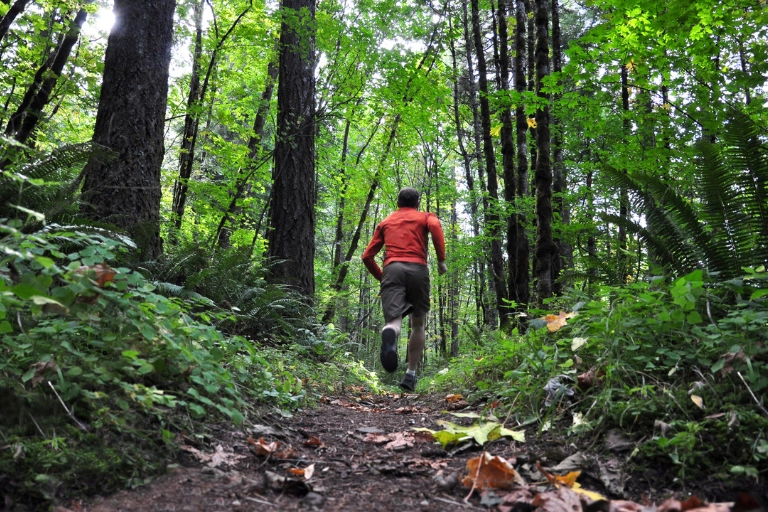
The benefits of trail running include all of the benefits of regular running, however, there are some unique differences, and trail running will challenge the body in different ways compared to running on hard surfaces, such as road running.
Cardiovascular Health And Fitness
Of course, one of the main benefits of trail running, or any running, is improved cardiovascular health and fitness, which is vital for our overall health as well as performance in other activities we perform. I am a firm believer that having a good base of cardiovascular fitness is vital if we want to maximize our performance and recovery in other areas of fitness, such as strength training.
Even for non-runners, cardiovascular fitness should not simply be an afterthought. For those looking to improve their performance and the results they achieve in the gym, improving cardiovascular fitness is important, and will assist in building muscle, by increasing work capacity and aiding in recovery.
Core Strength
One of the benefits of trail running vs road running is that it can work the core to a greater degree, although this will depend somewhat on the type of trails you are running on. This is not to say that it will work your six-pack muscles such as the rectus abdominis to the same degree as exercises performed in the gym, such as ab curls or sit-ups, however, trail running will challenge other core muscles that may have been neglected.
Running on varied terrain and uneven surfaces involves rapid changes in direction, uneven foot placement, and the need to maintain full body and core tension for longer periods or even at all times, depending on the trail you are running on. You may also be jumping over obstacles such as rocks, tree stumps, ditches, and streams, all of which will challenge your core to some degree.
Leg Strength And Endurance
Trail running can be effective at training leg strength as well as endurance. Depending on the type of trail you are running on, as well as your fitness levels, trail running will involve different intensity levels and can involve slow jogs, medium-intensity running, as well as short sprints, rapid changes of direction, and jumps to get over obstacles. All of these will challenge both slow twitch and fast twitch muscle fibers.
Another of the benefits of trail running vs road running is that running on varied terrain with potentially steep ascents and descents will also work the muscle groups of the lower body in different ways. Running up hill will work your glutes and hamstrings more while running downhill, especially steep descents, will place a greater demand on the quads. Adding jumps into the mix will also work your calves to a greater degree than road running.
Balance
Running on uneven and rough surfaces, maneuvering over obstacles, having a strong core, a strong lower body, and good hip and ankle stability will also improve balance over time, and is another one of the benefits of trail running.
Reduced Risk Of Injury And Improved Joint Health
Running on trails can be less stressful on the lower body and is lower impact, compared to running on harder surfaces. Since trail running challenges stability a little more, improvements in core strength and knee stability, as well as the strength and power developed from running on uneven and challenging terrain will improve joint health by improving joint stability and may help prevent injuries.
Overuse injuries in tendons and ligaments are common in running, however, the varying direction of force in trail running can avoid overloading the lower body in one area. Another one of the benefits of trail running vs road running.
Calories Burnt
One of the benefits of trail running vs road running is the potential for burning more calories. This will depend on the intensity that you are working at, as well as the trail you are running on, however, in general, trail running will burn more calories, which can assist in fat loss.
Mental Health
Running or any other type of cardiovascular work can be great for mental health, and may help manage stress, and even reduce symptoms of anxiety and depression. One of the benefits of trail running vs road running, or running on a treadmill, is that it can take this to the next level. Being out in nature, exploring new routes, and being in a stimulating environment make trail running our number one choice for running and mental health.
Mindfulness
One of the potential benefits of trail running is that it can force us to practice mindfulness. Running over varied and challenging terrain demands that we are in the present moment and a high degree of concentration is required. We do not have time for negative thoughts about a past event or a situation we may be currently experiencing. If we have anxiety and are projecting into the future, trail running can also give us some temporary relief.
Freedom
Trail running is the ultimate expression of freedom and movement. There is nothing more primal than running outside, covering natural and varied terrain, and exploring new locations away from urban areas. We believe that performing at least some of our training outside of the gym is a great idea, and trail running is a great way to do this.
How To Start Trail Running?
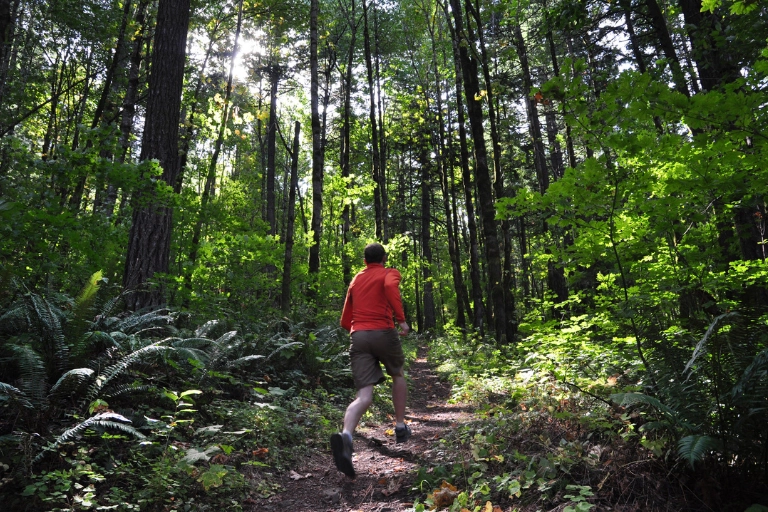
Find Your Local Trails
If you are looking to try out some trail running the first step is to look for some suitable areas. Some exploration may be required, and this is part of the fun of trail running. Exploring new areas, of the beaten track. You can often find suitable areas near you that you never knew existed. Nature reserves, forestry parks, and national parks can all be great places to run.
In the UK there are many footpaths, forestry roads and trails, and bridle paths, which you can link up to make interesting routes. In the US look for gravel/forestry roads and hiking trails.
Plan Your Routes
You can look for potential routes as well as plan them out, simply by looking on Google Maps, as well as using apps such as Garmin Connect and Strava. I use kamoot personally. You can then download your routes onto your fitness or running watches if they have breadcrumb navigation or full mapping. One way not to get lost! I love planning new routes, and then testing them out, but that’s just me!
Start Slowly With Easy Trails
If you are just starting with trail running start slowly and choose easier terrain such as forest trails. You do not have to run for the whole course. Even experienced trail runners sometimes walk on parts of more advanced trails, such as those with steep ascents and rough terrain.
Trail running is about covering varied terrain, but this does not mean we are always running. Start with periods of running and alternate with walking. Depending on the terrain, trail running can also change your running gait, something to be aware of if you are coming from a road running background.
Do You Need Specialist Kit?
You do not necessarily need specialist kit to start trail running. Normal running shoes can be used on easier trails especially if it is dry. In wet weather, or on loose and/or rocky terrain, trail running shoes will provide more grip and some extra protection for your feet, from things such as sharp rocks.
Use common sense, and prepare for any weather changes that may happen, as you are more exposed when running in more natural environments. Running fairly close to home will likely only require a lightweight waterproof jacket, and a water bottle or hydration pack, depending on the climate. With distance and remoteness, your kit list will become larger.
Safety
When running in more remote areas some thought should be given to safety, especially if you are running on your own and in areas you do not know well. If you can, it is probably a good idea to run with someone else, as accidents are more likely to happen on rougher terrain, even if only a twisted ankle, and you are unable to walk home.
If you have to run on your own, choose areas you know well, take your phone with you, and tell someone where you are going and how long you are likely to be before you set off. Another good option is to run where you know you will meet people, such as popular walking areas or areas where people walk their dogs.
How I Use Trail Running
I am by no means an expert trail runner, however, I use trail running as my primary form of outside cardio, especially in the summer. Two short to medium-length runs per week are enough to provide the benefits of trail running, without interfering with other activities I perform such as strength training in the gym.
My Local Route, Running From My House, Using Bridle Paths And Forest Tracks
The loop from my house consists of country lanes, farm tracks, bridle paths, and forest trails. A great way to get out in nature, clear my head, and get a great cardio workout in, and is far superior to running on a treadmill in a boring gym environment, in my opinion. I also walk this route regularly to get in my 10,000 steps per day.
Conclusion
There are many great benefits of trail running. If road running is your sport or you are just a recreational runner, trail running can be a great option to include as part of your regular training week. It provides some unique challenges and benefits compared to road running, or running on a treadmill.
If you are not a runner and your main goal is increasing strength and building muscle in the gym, trail running can be a great option, as long as it does not impact your performance and recovery from your strength training.
Moderation is key here, two to three short runs, working at a low to medium intensity, depending on your fitness level, is a good place to start. This will also depend on the strength training split you are following, and how many days you are training each week.








